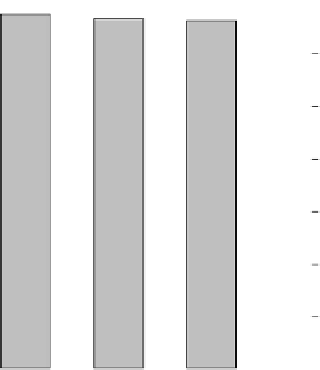Agriculture Reference
In-Depth Information
725
crop: winter-wheat
soil: loam
date: 26.4.2000
location: near Kiel,
Germany
715
713
700
24
22.7
600
20
500
16
400
12
300
8
200
shut-off
level
3.3
4
100
2.2
closed
canopy
canopy
not closed
bare
soil
closed
canopy
canopy
not closed
bare
soil
Fig. 9.29
Soil- and crop canopy effects on spectral indices (From Heege and Thiessen
2002
)
9.4.4
Soil or Plants in the Field of View
Fertilizer control using reflection from the leaves requires
green plants
in the field of
view of the sensor. In the case of patches with little or no plants, the resulting applica-
tion rate may be inappropriate. The reason for this is that a lack of nitrogen within a
canopy as well as bare soil instead of plants turns the signal in the same direction.
A lack of nitrogen within a normally developed canopy should be compensated
for by increased fertilization, whereas it certainly is not reasonable to apply high
amounts of nitrogen to larger patches of
bare soil
. In rolling landscapes with undu-
lating fields, these patches of bare soil can be the result of uneven winter killing of
plants. Therefore, an additional control for completely shutting off the flow of fertil-
izer is needed.
A reliable indicator for this control is the ratio of near infrared- to visible reflec-
tance (Felton and McCloy
1992
). The relation of near-infrared to red already is used
for weed control by
spot spraying
in fallow fields or by strip spraying in crops with
decreases drastically from 20 or more to 3 or less (Heege and Thiessen
2002
). For
winter cereals in Germany, it seems to be reasonable to stop fertiliser spreading
when the near infrared to red relationship drops below 3 (Fig.
9.29
). This automatic
shut-off does not necessitate additional sensing equipment if infrared and red reflec-
tance signals are recorded anyway. This depends on the spectral indices that are
used for the prediction of the nitrogen supply.
With small grains, the Kiel system is rarely used for the first dressing of small
cereals. Its application is mostly limited to the second and later dressings. This is














